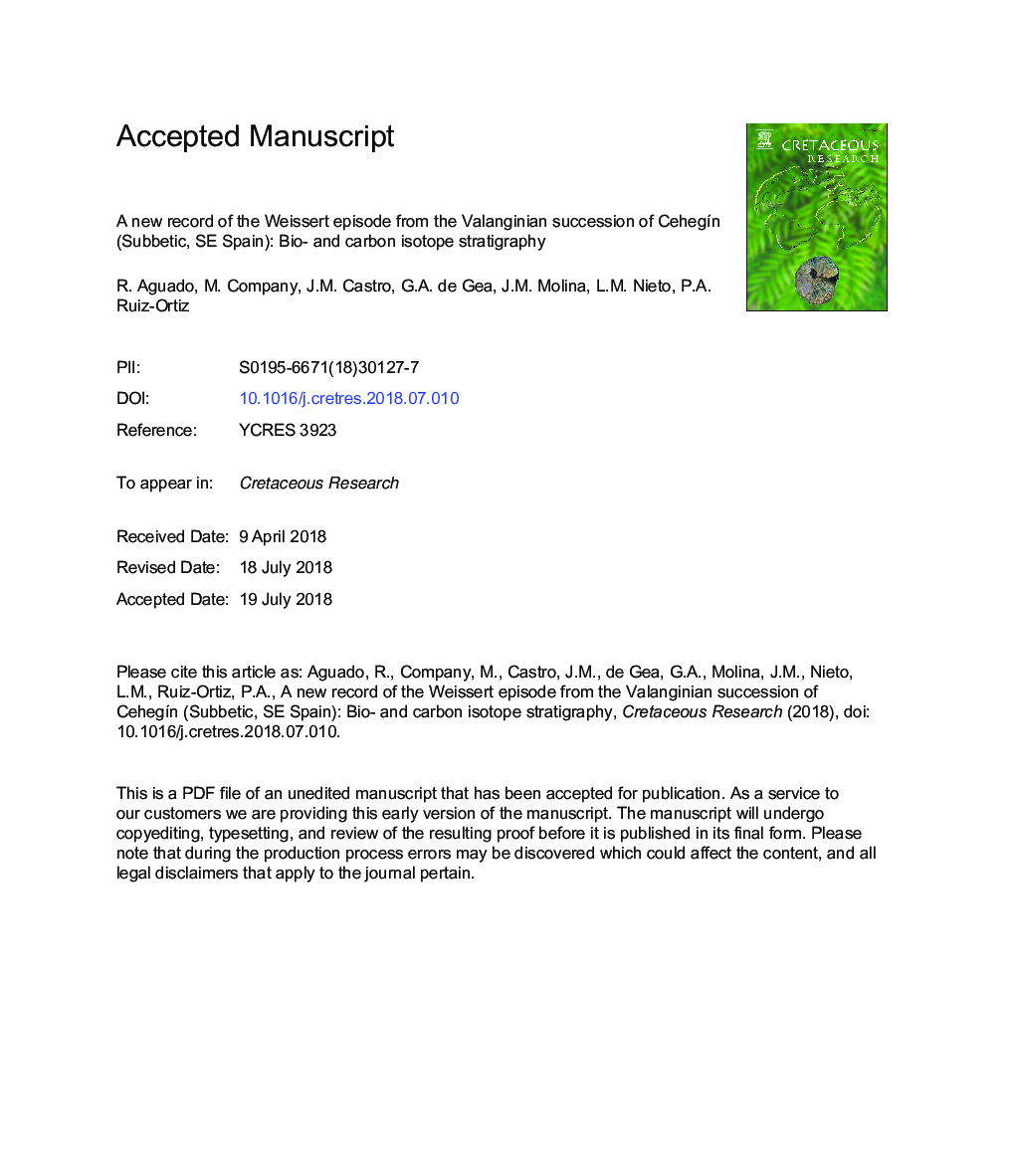| کد مقاله | کد نشریه | سال انتشار | مقاله انگلیسی | نسخه تمام متن |
|---|---|---|---|---|
| 8916142 | 1642031 | 2018 | 57 صفحه PDF | دانلود رایگان |
عنوان انگلیسی مقاله ISI
A new record of the Weissert episode from the Valanginian succession of CehegÃn (Subbetic, SE Spain): Bio- and carbon isotope stratigraphy
دانلود مقاله + سفارش ترجمه
دانلود مقاله ISI انگلیسی
رایگان برای ایرانیان
کلمات کلیدی
موضوعات مرتبط
مهندسی و علوم پایه
علوم زمین و سیارات
فسیل شناسی
پیش نمایش صفحه اول مقاله

چکیده انگلیسی
A biostratigraphic and geochemical study (C and O isotopes) of one of the most complete Valanginian sections of the External Zones of the Betic Cordillera (CehegÃn composite section), together with its correlation with other European basins, is presented in this contribution. Ammonites and calcareous nannofossil biostratigraphy provide a detailed framework to correlate the CehegÃn section with reference sections of the Vocontian, Lombardy and Umbria-Marche basins. The carbon isotope profile of the CehegÃn section has been subdivided in four segments, C-Va1 to C-Va4, following the same pattern described from the Vocontian basin. The C-Va2 segment, representing the main carbon isotope excursion (CIE sensu stricto), spans from δ13C values of 0.09-0.11â° in the upper part of the Karakaschiceras inostranzewi ammonite Subzone (NK3A Subzone of calcareous nannofossils) to 2.67â° in the upper part of the Karakaschiceras pronecostatum Subzone (NK3B Subzone of calcareous nannofossils). The C-Va3 segment corresponds to an isotopic plateau of the δ13C profile, with values oscillating around 2.39â°, in which the maximum (2.68â°), considered as the upper boundary, was recorded within the upper part of the Olcostephanus nicklesi Subzone, being almost coeval with the last record of the calcareous nannofossil Tubodiscus verenae. The C-Va1 and C-Va4 segments represent, respectively, the pre-CIE δ13C lower values (oscillating around 1â°) and the post-CIE slight decreasing trend (2.60â°-2â°). After considering the different proposals among authors as to which part of the carbon isotope profile should be identified as the Weissert episode, a return to the original definition (interval from minimum to climax of δ13C values) is proposed. That includes, in the CehegÃn composite section, the C-Va2 and C-Va3 segments. Segment C-Va2 shows in the CehegÃn section a rapid change of δ13C towards higher values (CIE), with an amplitude of 2.57â°, higher than that found in marine carbonates of various Valanginian sections and drills. The biostratigraphic data show that the onset of the Weissert episode is practically synchronous in the Subbetic and in the Vocontian basin, but apparently a little earlier than the onset of that episode in the Lombardy and Umbria-Marche basins, although correlation problems cannot be dismissed. Oxygen isotope values are probably affected by the addition of cement during burial diagenesis. They range from â2.91â° to 1.19â°, and the δ18O curve shows an initially decreasing trend (minimum in the upper part of the Saynoceras verrucosum Subzone) followed by a segment of nearly stable values, which fluctuate â¼2â° throughout the rest of the section.
ناشر
Database: Elsevier - ScienceDirect (ساینس دایرکت)
Journal: Cretaceous Research - Volume 92, December 2018, Pages 122-137
Journal: Cretaceous Research - Volume 92, December 2018, Pages 122-137
نویسندگان
R. Aguado, M. Company, J.M. Castro, G.A. de Gea, J.M. Molina, L.M. Nieto, P.A. Ruiz-Ortiz,